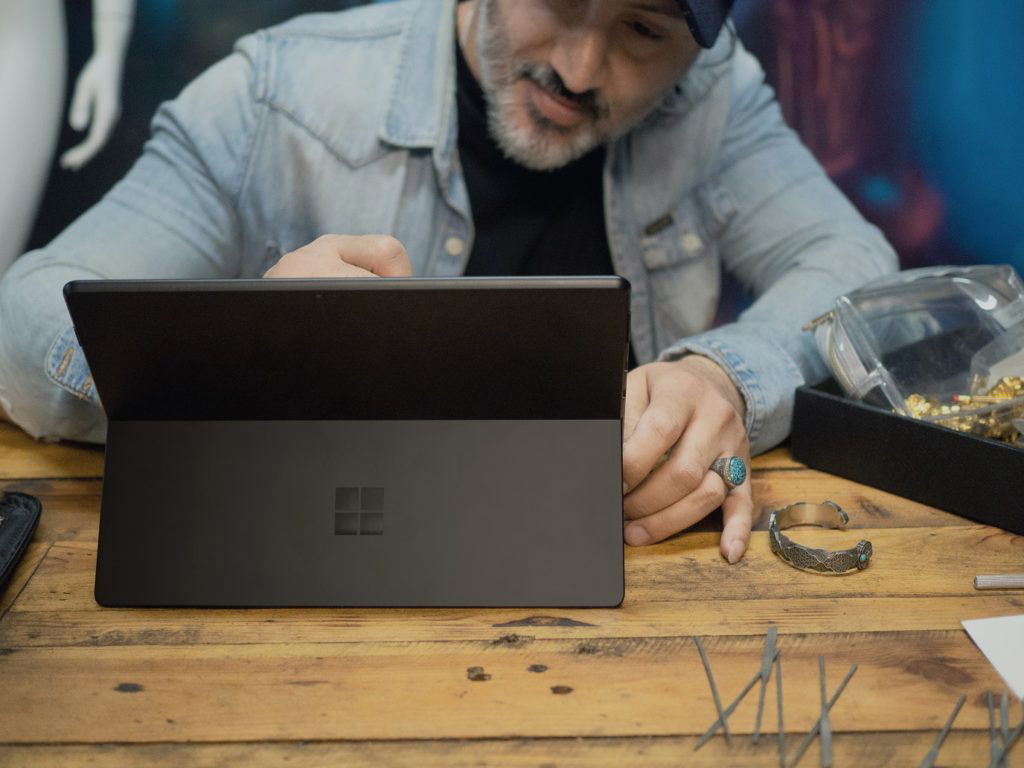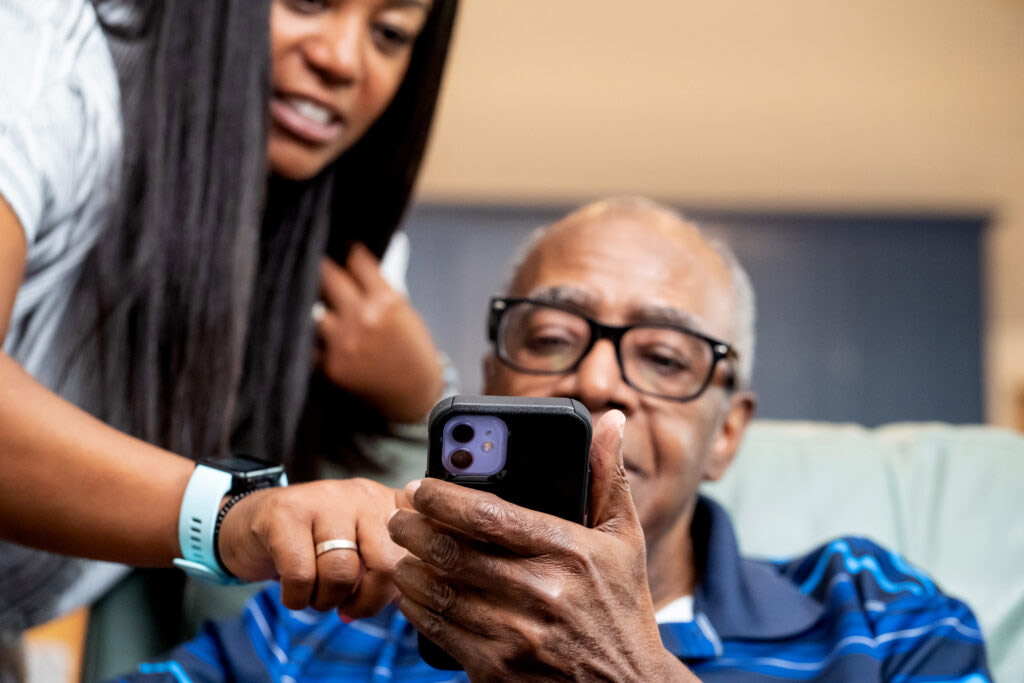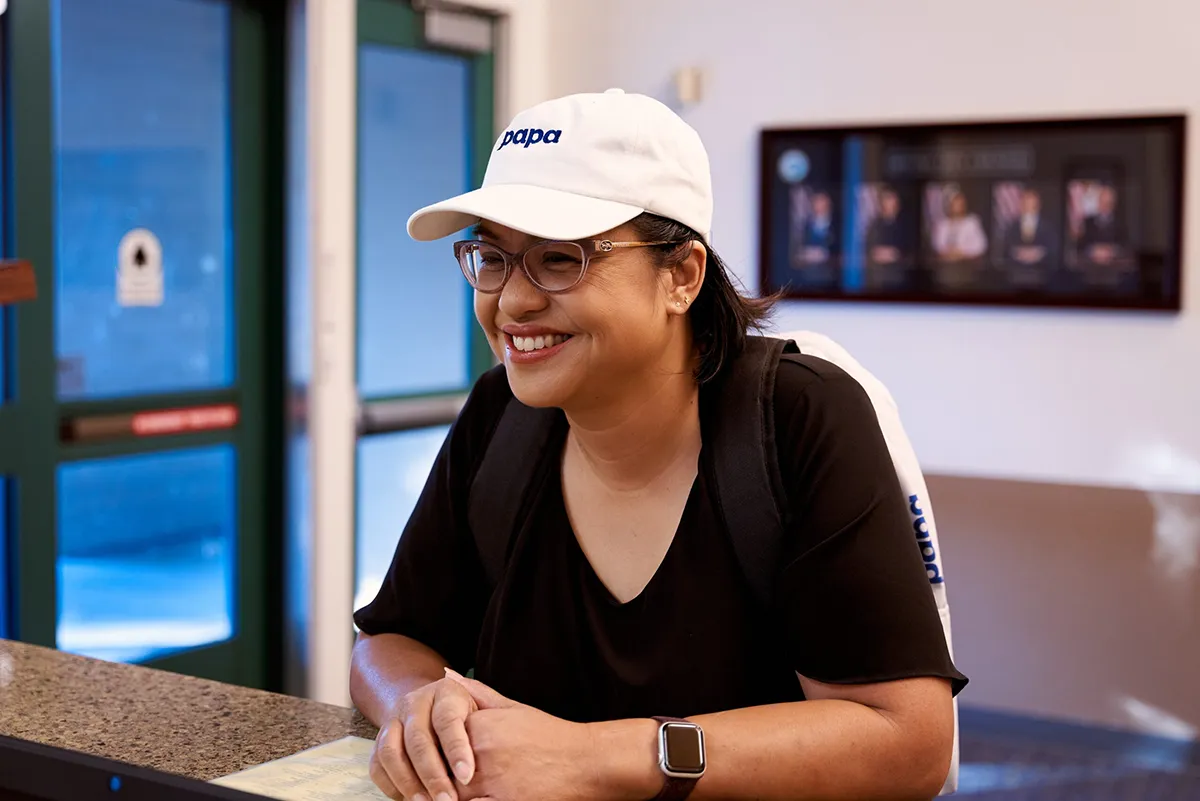Resources exist to help seniors get access to cheap and even free devices and services
In this day and age, seniors need access to a phones or computers. It’s a fact that became even more apparent during the pandemic. In particular, Covid-19 highlighted the issue of access to technology for seniors, including having the skills to use it.
But access is about much more than knowing how to use technology.
Access is being able to afford devices in the first place.
The good news? Resources are available to help seniors get free or inexpensive access to technology. Free phones for seniors do exist. As do laptops, computers, tablets, internet and phone plans.

Free phones, computers and tablets for seniors—they do exist!
Hundreds of programs exist to help seniors gain access to technology, but it’s difficult to know where to start. Often the first step is overlooked… you must first have a device.
Let’s begin by looking at some programs offering inexpensive and even free phones, computers and tablets for seniors. Most of these resources are available to people ages 65+, but some are available to all ages.
- Find a nonprofit that provides cheap or free phones, computers and tablets for seniors. National nonprofits include Computers with Causes, The On It Foundation, PCs for People, and Alliance for Technology Refurbishing and Reuse. Make sure to search your area for local nonprofits as well.
- Check with your neighborhood senior center. Almost every city has one. They can offer suggestions, but may also have free computers, phones and internet available for use. Some even have free technology classes.
- Ask for a senior discount when purchasing devices. DELL and Lenovo offer senior discounts, and many retailers have discounts for AARP members.
- Go to your local library. They usually have devices to use at the library, but some also lend out devices.
- Check computer repair shops. They will buy computers that are not in working condition, fix them up, and then resell them at a lower price point.
- Look for refurbished phones, computers and tablets. Apple and Samsung guarantee their refurbished devices for up to one year. (Amazon and Best Buy also provide a warranty, but in general, it is only 90 days.) The added bonus is that refurbished is not only the more affordable option, it’s also the most eco-friendly option.
- Always check discounts before purchasing. Some companies don't offer discounts upfront, but do have ways to save.
Buyer Beware
Some cellular companies will offer a free phone or tablet when signing up for a new plan. Check the fine print to make sure there isn’t a cost later on.

Always beware of scams and too-good-to-be-true deals when searching online. Don’t give out your personal information before you’re sure it’s a reputable site. One way you can check is by looking at Better Business Bureau ratings.
Cheap or free internet for seniors
Most devices are only as good as the broadband internet they run on. Some companies offer senior discounts, some offer a lower price (with limited perks and options), and some—depending on age and income requirements—even offer free internet for seniors.
The options for affordable access are endless. There are thousands of internet providers in the U.S., and these companies offer programs for many different incomes.
For example, the Affordable Connectivity Program, in connection with the Federal Communications Commission (FCC), is a government program that provides cheap internet for seniors and low-income households.
Companies offering cheap or free internet for seniors
- Google Fiber: starts at $20/month for households making $40,000 per year or less, but they also have a free internet for seniors if you qualify
- Internet First: you must qualify and apply for this program first, but plans start at $9.95
- Everyone On or highspeedinternet.com: both help you find affordable services based on your location
- AT&T: ask about senior discount plans
- Comcast: offers a $10/month plan, but keep in mind it has fewer features
Reminder: Some companies will offer a seemingly lower cost, but after 12 months it goes up to their normal monthly cost. So, keep that in mind and make sure to ask questions.

Cell phone plans for seniors
As we all know, cell service and devices can be expensive. And, cost is one of the biggest barriers for seniors when it comes to getting connected.
But for seniors, the connection that comes with being able to call or text friends and family—and receive local emergency alerts—is worth every penny.
Finding the best cell phone plans for seniors
- When looking at plans, ask for a senior discount.
- If you know you won’t use a cellular phone often, choose a plan with limited talk minutes or data. It will be cheaper as long as you don’t exceed your minutes.
- Find a provider that offers a discount each month for enrolling in automatic draft payments or getting rid of paper billing.
- Ask about other savings. Before you sign a contract, make sure you have taken advantage of all the discounts they offer. For example, veterans may qualify for a military discount.
- While most senior discounts are for people ages 65+, some discounts begin at age 55. Even if you don’t qualify yet, find out when discounts begin. Set a birthday reminder and ask for the discount when you reach that age.
Ask these questions about cellular service
Before deciding on what service provider you want to go with, decide what kind of features are most important. Here are some starter questions:
- What is my budget for a cell phone plan?
- Is it important to have features like entertainment or taking pictures?
- What coverage is available near me?
- Is getting a free device with a plan a must?
- How many lines do I need for my household?
- Will I travel and need access to phone and data?
- How much data do I need? (If you’re not sure, ask for some examples of why people need data. You may not need as much data as you think.)
Companies offering cheap or free cell phone plans for seniors
Here are some cellular providers that offer a senior discount or work with government agencies to help low-income individuals get the technology they need:
- Assurance Wireless: this is a government-funded program that offers income-based wireless service. They offer one free plan per household.
- Comcast Xfinity: while they don't offer a senior discount, they do have a plan called Internet Essentials that is $9.95/month.
- T-Mobile: offers a 2-line 55+ essentials plan starting at $27.50 for each line.
- Mint Mobile: offers a seniors 55+ unlimited talk and text plan, starting at $15/ month. They also offer other affordable plans.
Also, theseniorlist.com has a list of all the pros and cons of these options and more.
Technology for seniors is a complex topic
It will take time to investigate all the options for good, affordable technology and the services required to run them. But it’s worth it!
Why is it important for seniors to have access to technology?
There are many reasons why technology access is vital for Seniors.
Firstly, it helps us with everyday things like connecting with loved ones, attending virtual medical appointments, and receiving local weather alerts. Secondly, it’s a barrier-breaker. Technology helps seniors, connect with the world.
As we come out of the pandemic, the work to close the digital divide is not only necessary, but of utmost importance.
Help your community by teaching basic technology
If you’re tech savvy and want to put your skills to good use, working as a part-time Papa Pal companion caregiver may be a great fit for you.
Papa Pals support seniors, older adults, and families in their communities with a variety of tasks, including teaching basic technology. Most Papa Pals work a few hours a week or more. It’s a great way to boost your income while giving back to the community. To find out more about working as a Papa Pal, click here.


